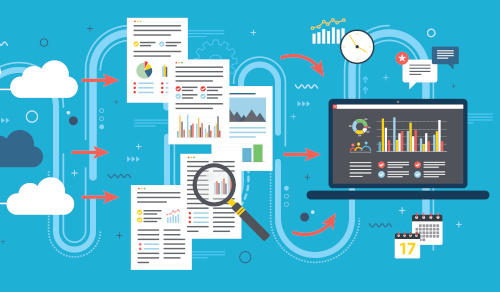2. Use Data to Set Goals and Target Interventions
One thing most educators can agree on is that all students learn differently. Thus, student goal setting and interventions are often tailor-made to the unique needs of each student. Seeing where a particular student falls on the at-risk model enables educators to set specific, individualized goals for students and target interventions where most needed. While each school will face unique challenges, data can help all schools spot trends and determine areas of priority.
Continuing with the prior example, having set and applied clear criteria to identify at-risk students, the district could then turn its attention to implementing an intervention. An example could be to reduce the number of students acquiring the highest risk score the following year, and set a goal of meeting a specific (but reasonable and attainable) threshold of success for the next three years (e.g., reduce by 10 percent the first year). One such approach includes selecting one or two areas of focus at one or two campuses initially. Further breaking down results of the at-risk model by individual categories would inform which areas of risk are the highest priority, and would offer the most return on investment if successfully targeted for intervention. In the current example, students with failing grades tend to have the overall highest score, suggesting a potential area to target, or seek further information.
3. Use Data to Support Meaningful Parent-Teacher Communication
Sharing the students’ data with their families can help to drive ongoing meaningful communication between school and home. Using data, educators can inform parents about their students through data-driven conversations.
Offering specific information about a child’s attendance or behavior can help with creating more meaningful relationships with home. Having data enables teachers to talk specifically about the number of attendance or behavior incidents for a student in a month and have a two-way conversation with a parent about supporting the child’s improvement. For instance, being able to see that a student has been chronically absent this year, but has never had an attendance problem in past years suggests the family might be experiencing a unique and stressful situation. Only with data at hand would this insight be possible, allowing the opportunity for the educator to ask if everything is okay at home. On a lighter note, having student-level data that is longitudinal and includes both quantitative and qualitative data offers a wonderful opportunity to see how a student has progressed over time, which is always a fun conversation to have with caregivers.
There is great potential for data to serve as a tool for educators and administrators who want to improve schools and help all students reach their potential. Collecting and analyzing student-data can help create a holistic view of a student, set appropriate, individualized goals and targeted interventions, and support meaningful parent-teacher communication. This can all help students along the way and ensure greater outcomes.
- Are substitutes the answer to the teacher shortage? - June 13, 2023
- Preparing for ransomware attacks begins with education - June 13, 2023
- How to use UDL-inspired technology to reengage students - June 12, 2023

